Organisation & Behaviour In this session: 2. 3

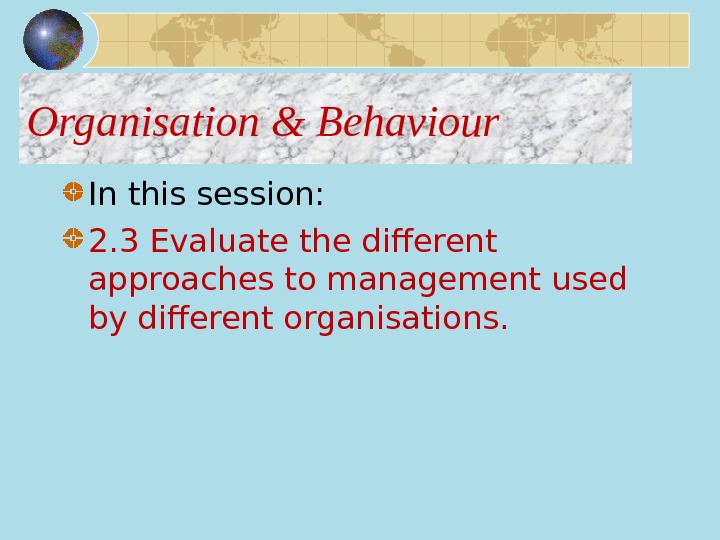
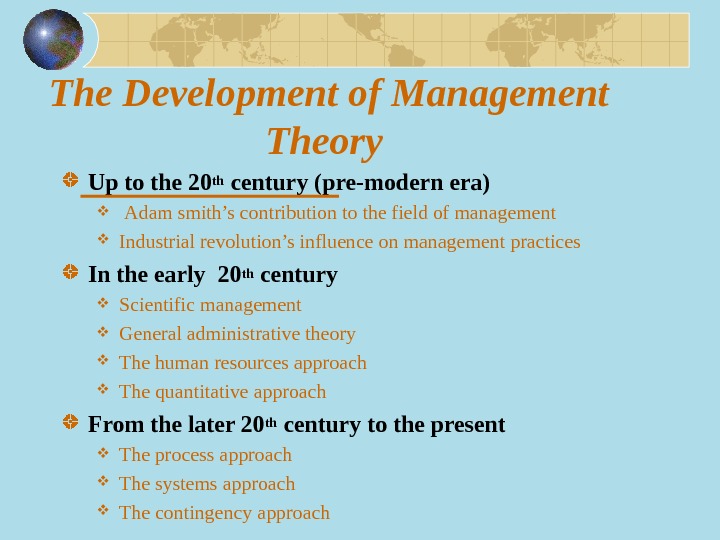
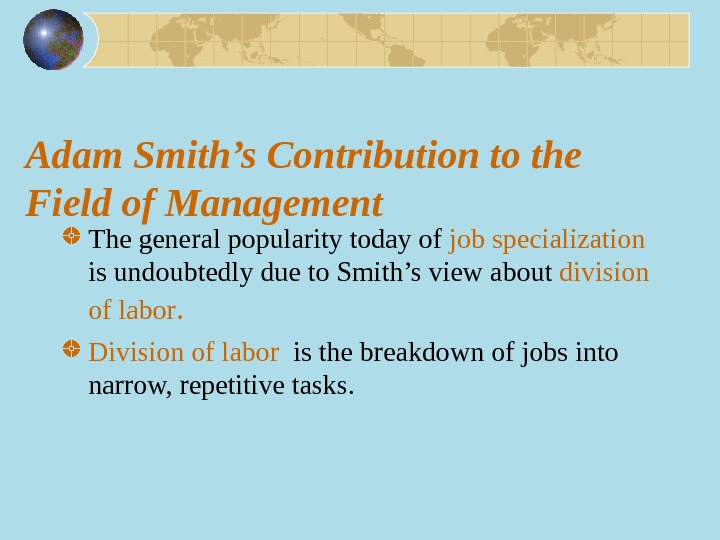
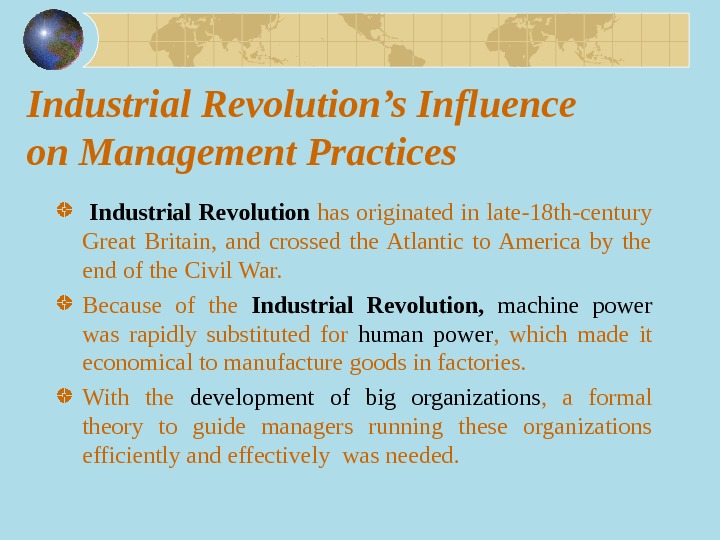
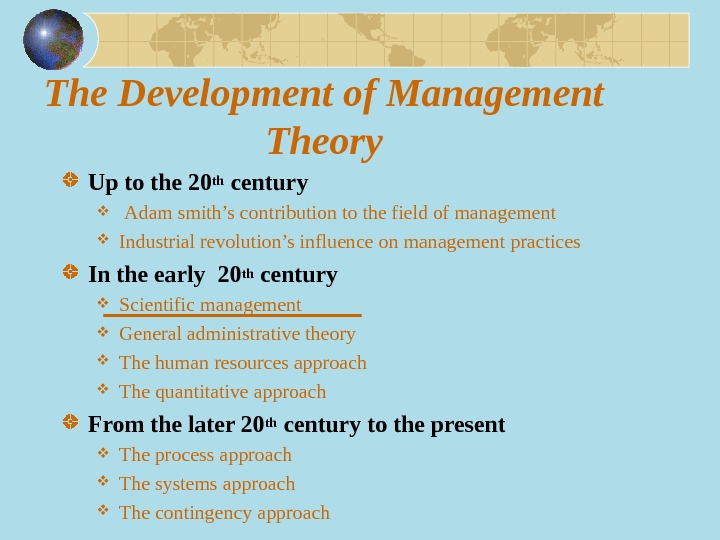
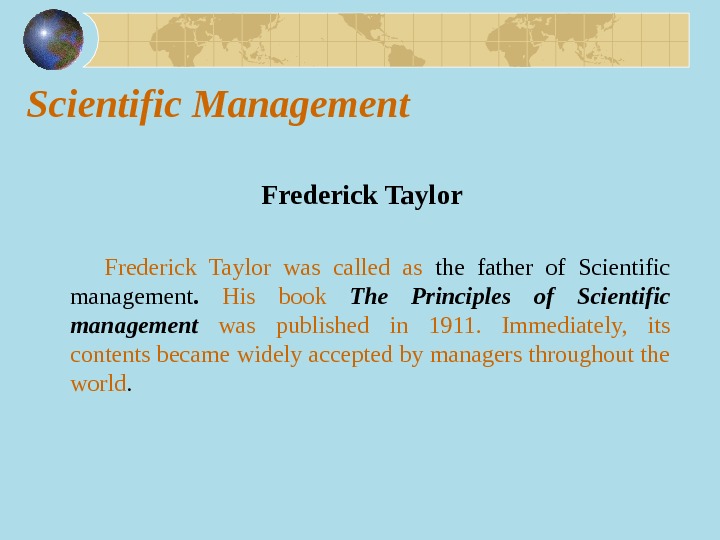
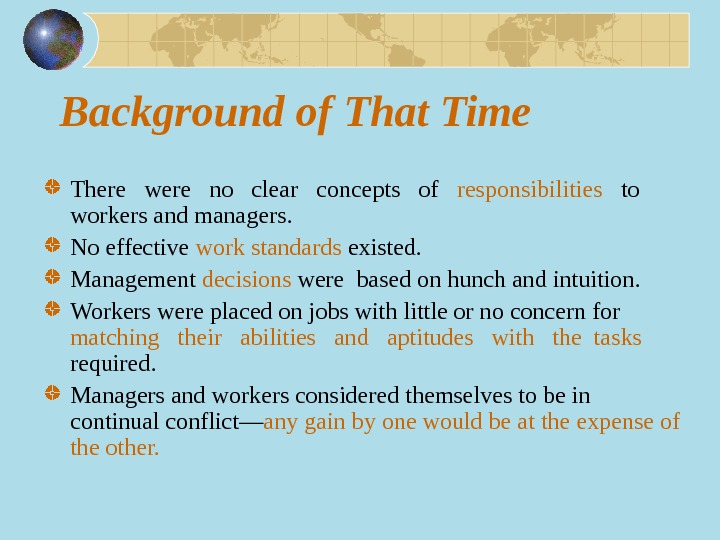
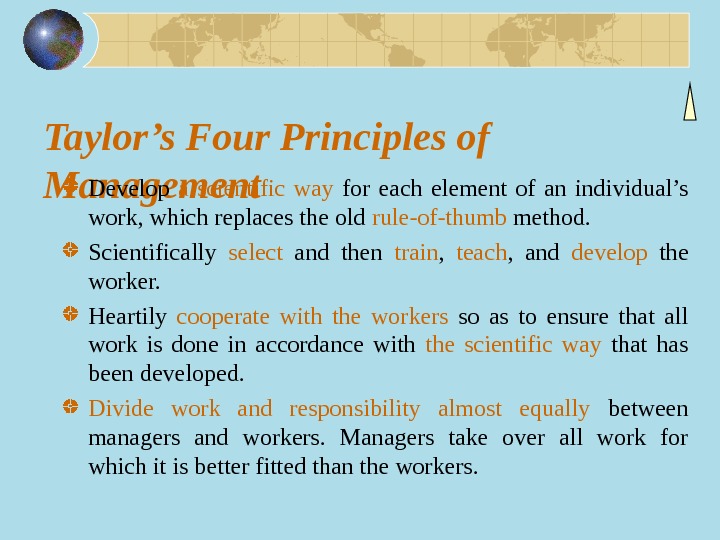
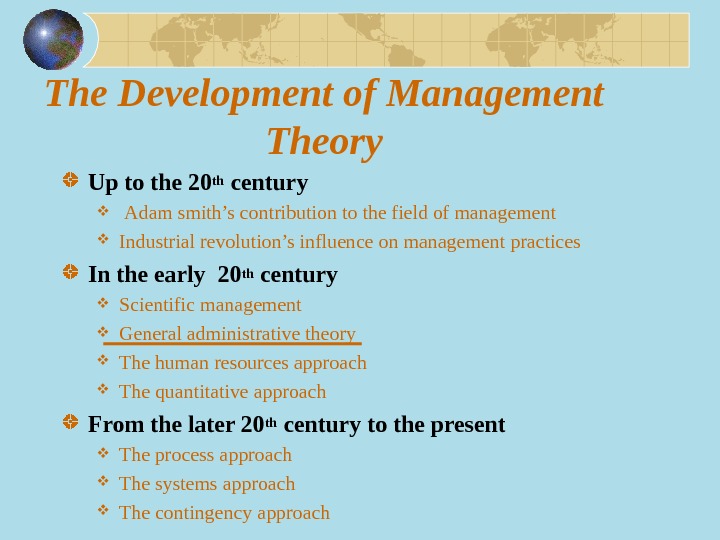
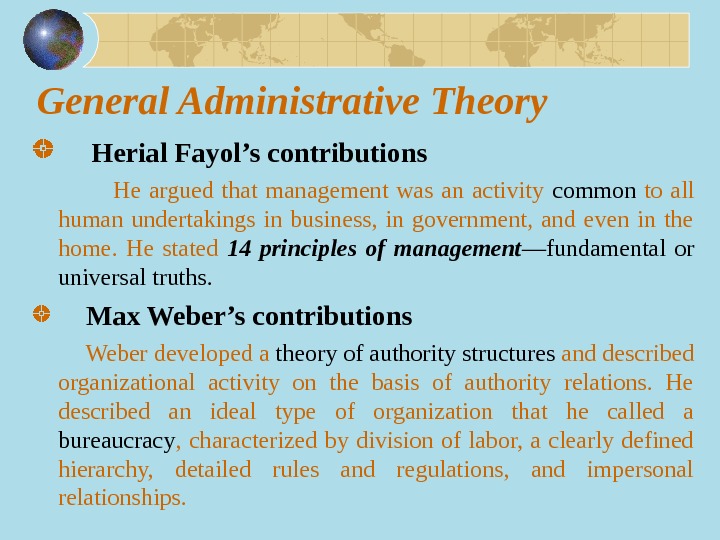
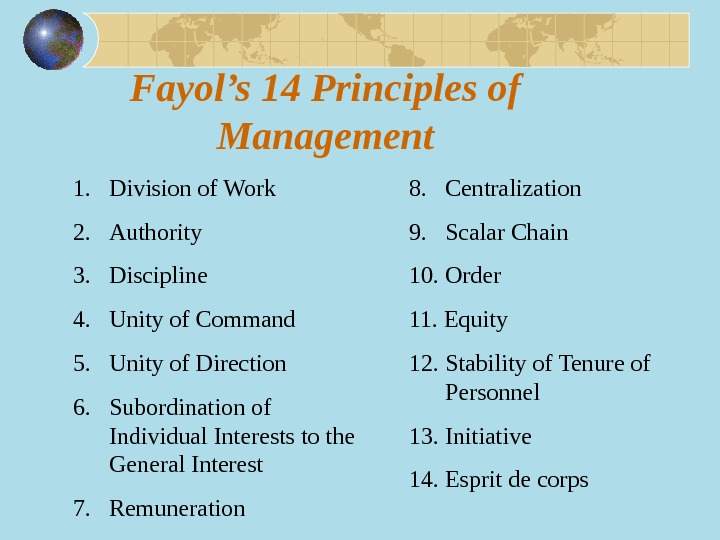
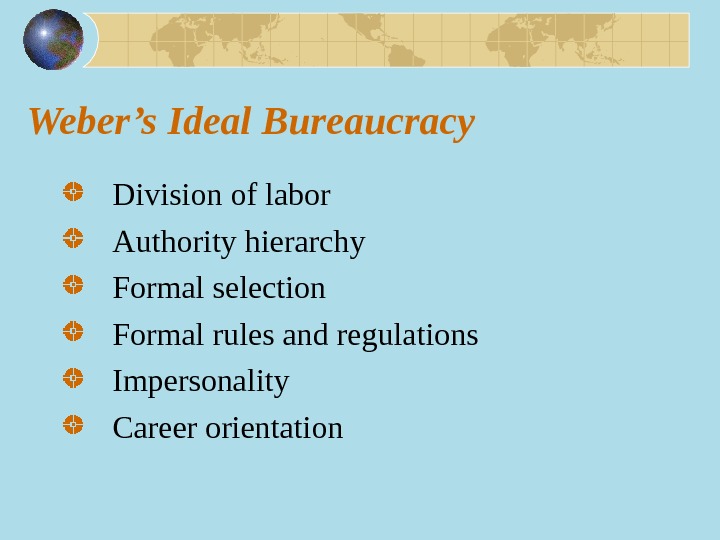
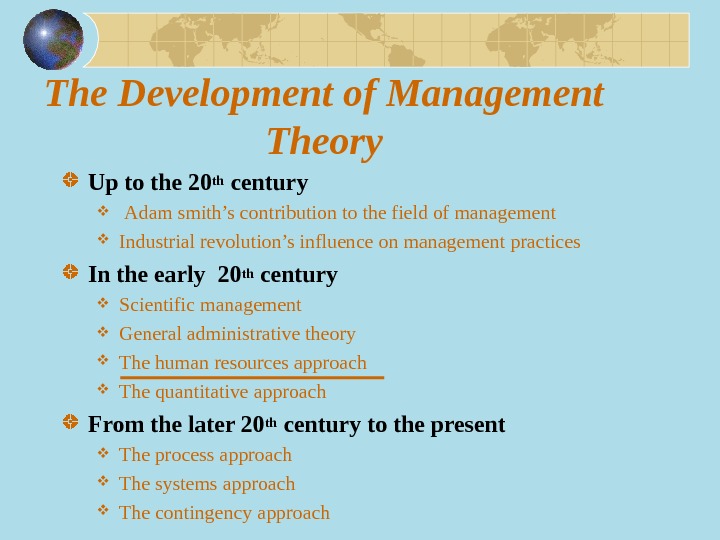
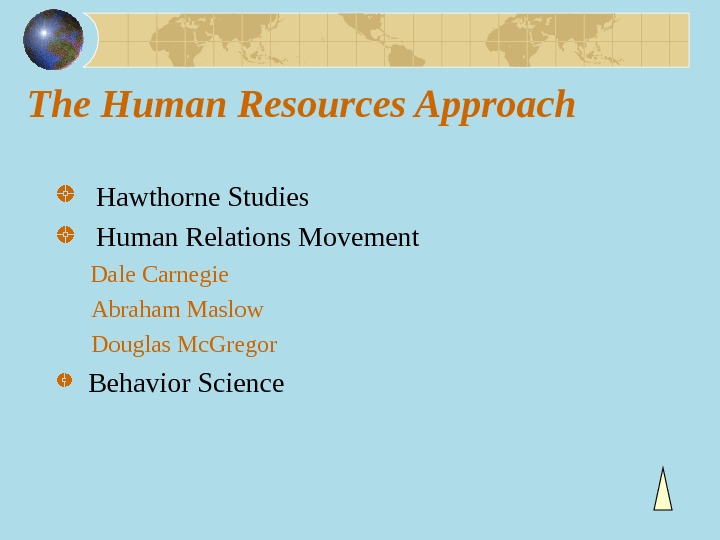
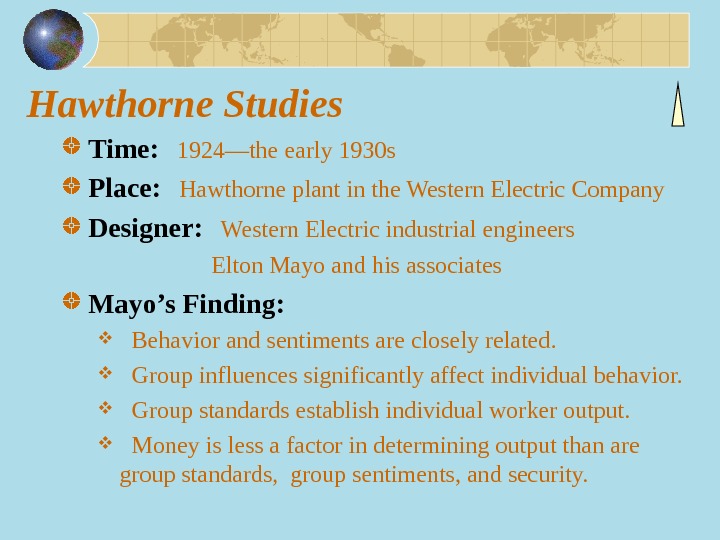
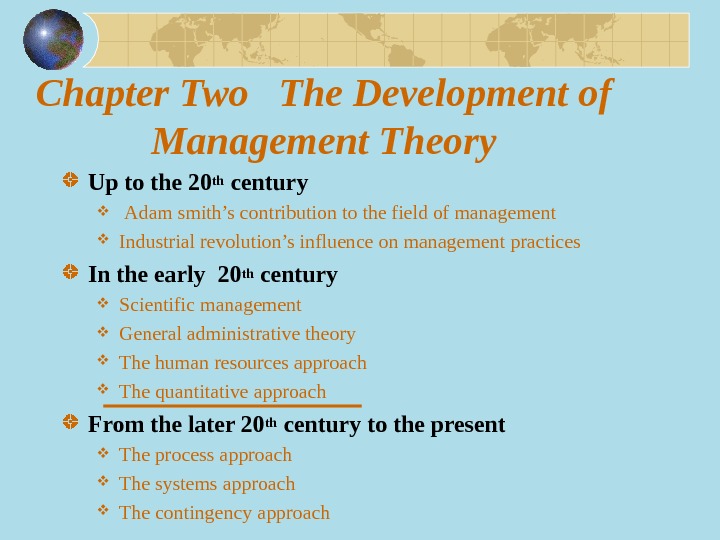
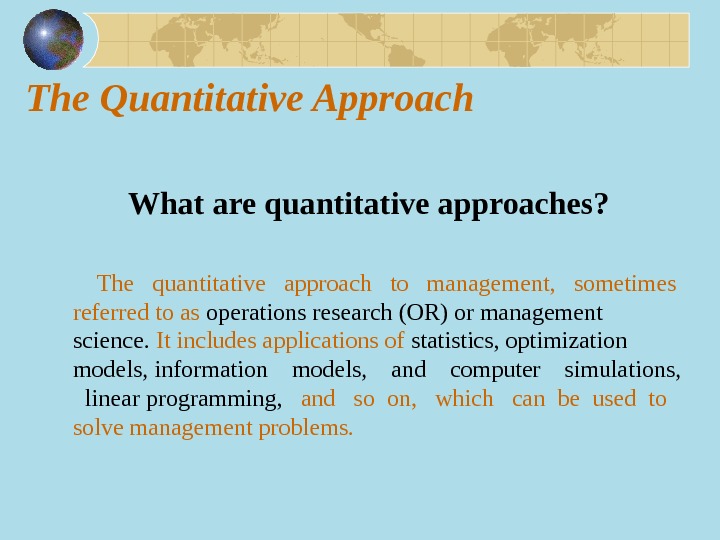
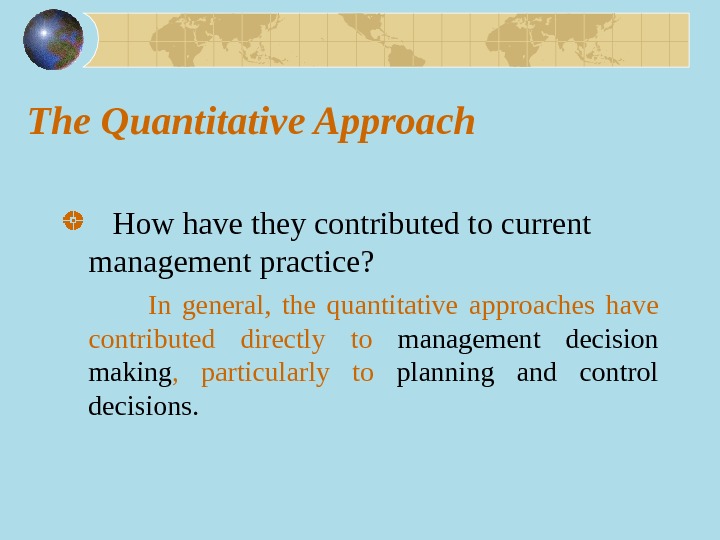
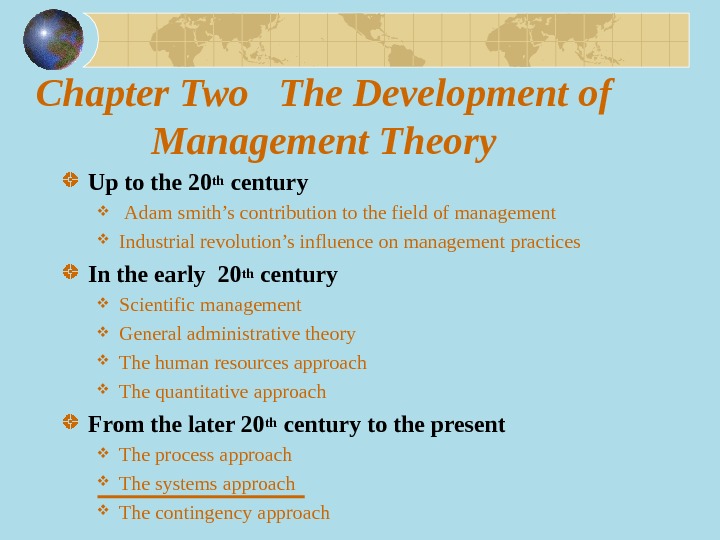
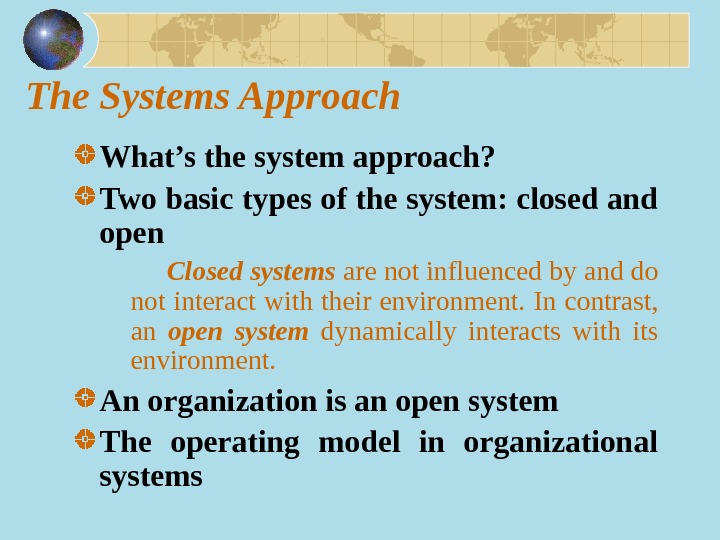
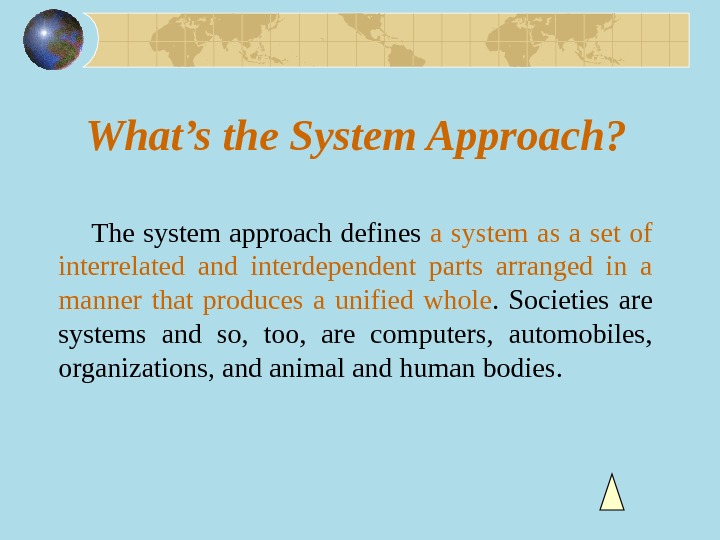
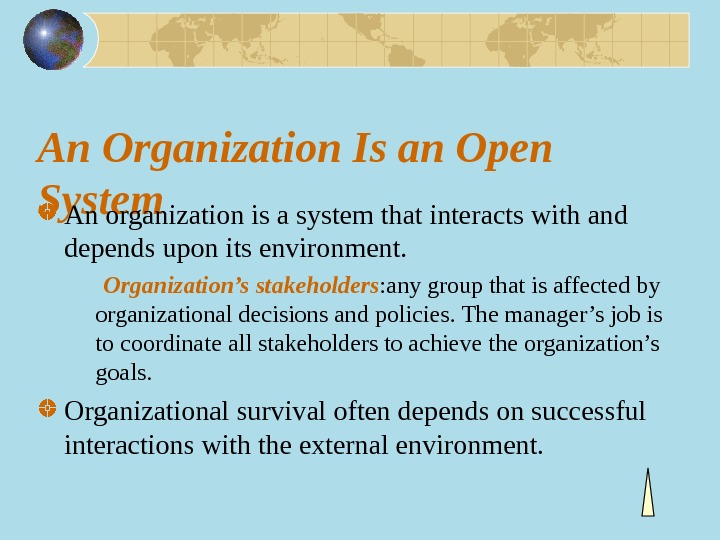
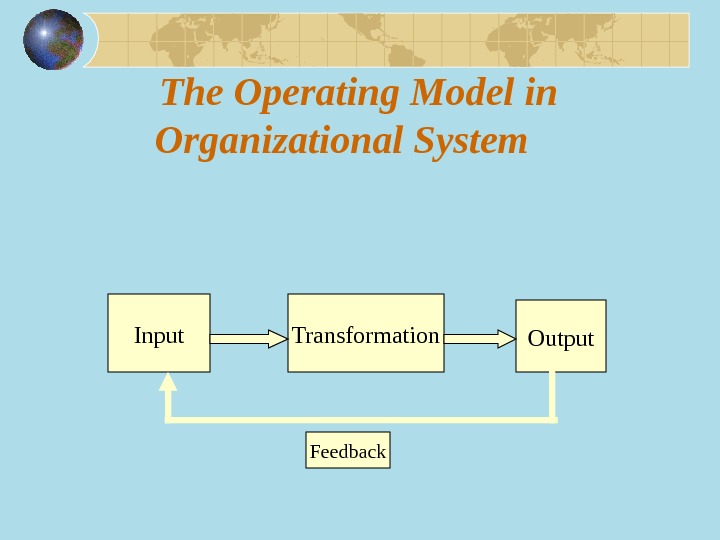
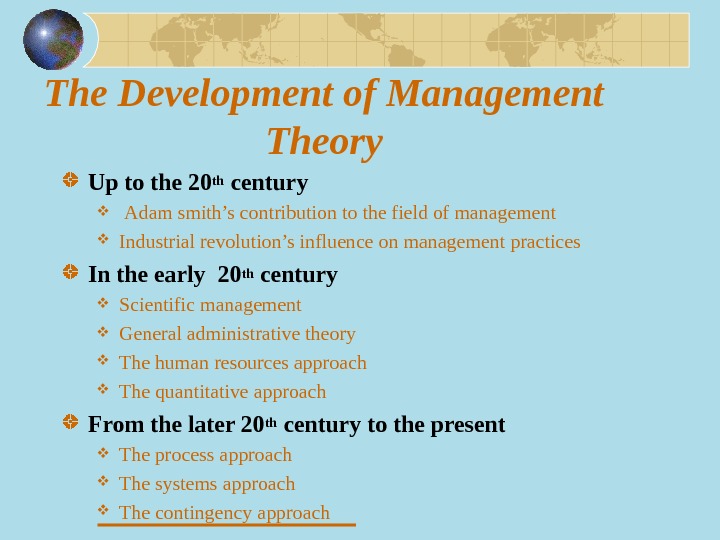

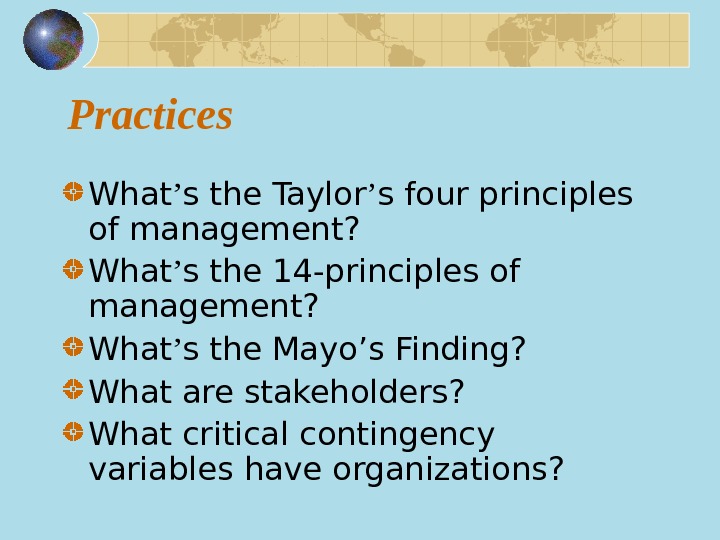
- Размер: 971.5 Кб
- Количество слайдов: 26
Описание презентации Organisation & Behaviour In this session: 2. 3 по слайдам
 Organisation & Behaviour In this session: 2. 3 Evaluate the different approaches to management used by different organisations.
Organisation & Behaviour In this session: 2. 3 Evaluate the different approaches to management used by different organisations.
 The Development of Management Theory Up to the 20 th century (pre-modern era) Adam smith’s contribution to the field of management Industrial revolution’s influence on management practices In the early 20 th century Scientific management General administrative theory The human resources approach The quantitative approach From the later 20 th century to the present The process approach The systems approach The contingency approach
The Development of Management Theory Up to the 20 th century (pre-modern era) Adam smith’s contribution to the field of management Industrial revolution’s influence on management practices In the early 20 th century Scientific management General administrative theory The human resources approach The quantitative approach From the later 20 th century to the present The process approach The systems approach The contingency approach
 Adam Smith’s Contribution to the Field of Management The general popularity today of job specialization is undoubtedly due to Smith’s view about division of labor. Division of labor is the breakdown of jobs into narrow, repetitive tasks.
Adam Smith’s Contribution to the Field of Management The general popularity today of job specialization is undoubtedly due to Smith’s view about division of labor. Division of labor is the breakdown of jobs into narrow, repetitive tasks.
 Industrial Revolution’s Influence on Management Practices Industrial Revolution has originated in late-18 th-century Great Britain, and crossed the Atlantic to America by the end of the Civil War. Because of the Industrial Revolution, machine power was rapidly substituted for human power , which made it economical to manufacture goods in factories. With the development of big organizations , a formal theory to guide managers running these organizations efficiently and effectively was needed.
Industrial Revolution’s Influence on Management Practices Industrial Revolution has originated in late-18 th-century Great Britain, and crossed the Atlantic to America by the end of the Civil War. Because of the Industrial Revolution, machine power was rapidly substituted for human power , which made it economical to manufacture goods in factories. With the development of big organizations , a formal theory to guide managers running these organizations efficiently and effectively was needed.
 The Development of Management Theory Up to the 20 th century Adam smith’s contribution to the field of management Industrial revolution’s influence on management practices In the early 20 th century Scientific management General administrative theory The human resources approach The quantitative approach From the later 20 th century to the present The process approach The systems approach The contingency approach
The Development of Management Theory Up to the 20 th century Adam smith’s contribution to the field of management Industrial revolution’s influence on management practices In the early 20 th century Scientific management General administrative theory The human resources approach The quantitative approach From the later 20 th century to the present The process approach The systems approach The contingency approach
 Scientific Management Frederick Taylor was called as the father of Scientific management. His book The Principles of Scientific management was published in 1911. Immediately, its contents became widely accepted by managers throughout the world.
Scientific Management Frederick Taylor was called as the father of Scientific management. His book The Principles of Scientific management was published in 1911. Immediately, its contents became widely accepted by managers throughout the world.
 Background of That Time There were no clear concepts of responsibilities to workers and managers. No effective work standards existed. Management decisions were based on hunch and intuition. Workers were placed on jobs with little or no concern for matching their abilities and aptitudes with the tasks required. Managers and workers considered themselves to be in continual conflict— any gain by one would be at the expense of the other.
Background of That Time There were no clear concepts of responsibilities to workers and managers. No effective work standards existed. Management decisions were based on hunch and intuition. Workers were placed on jobs with little or no concern for matching their abilities and aptitudes with the tasks required. Managers and workers considered themselves to be in continual conflict— any gain by one would be at the expense of the other.
 Taylor’s Four Principles of Management Develop a scientific way for each element of an individual’s work, which replaces the old rule-of-thumb method. Scientifically select and then train , teach , and develop the worker. Heartily cooperate with the workers so as to ensure that all work is done in accordance with the scientific way that has been developed. Divide work and responsibility almost equally between managers and workers. Managers take over all work for which it is better fitted than the workers.
Taylor’s Four Principles of Management Develop a scientific way for each element of an individual’s work, which replaces the old rule-of-thumb method. Scientifically select and then train , teach , and develop the worker. Heartily cooperate with the workers so as to ensure that all work is done in accordance with the scientific way that has been developed. Divide work and responsibility almost equally between managers and workers. Managers take over all work for which it is better fitted than the workers.
 The Development of Management Theory Up to the 20 th century Adam smith’s contribution to the field of management Industrial revolution’s influence on management practices In the early 20 th century Scientific management General administrative theory The human resources approach The quantitative approach From the later 20 th century to the present The process approach The systems approach The contingency approach
The Development of Management Theory Up to the 20 th century Adam smith’s contribution to the field of management Industrial revolution’s influence on management practices In the early 20 th century Scientific management General administrative theory The human resources approach The quantitative approach From the later 20 th century to the present The process approach The systems approach The contingency approach
 General Administrative Theory Herial Fayol’s contributions He argued that management was an activity common to all human undertakings in business, in government, and even in the home. He stated 14 principles of management —fundamental or universal truths. Max Weber’s contributions Weber developed a theory of authority structures and described organizational activity on the basis of authority relations. He described an ideal type of organization that he called a bureaucracy , characterized by division of labor, a clearly defined hierarchy, detailed rules and regulations, and impersonal relationships.
General Administrative Theory Herial Fayol’s contributions He argued that management was an activity common to all human undertakings in business, in government, and even in the home. He stated 14 principles of management —fundamental or universal truths. Max Weber’s contributions Weber developed a theory of authority structures and described organizational activity on the basis of authority relations. He described an ideal type of organization that he called a bureaucracy , characterized by division of labor, a clearly defined hierarchy, detailed rules and regulations, and impersonal relationships.
 Fayol’s 14 Principles of Management 1. Division of Work 2. Authority 3. Discipline 4. Unity of Command 5. Unity of Direction 6. Subordination of Individual Interests to the General Interest 7. Remuneration 8. Centralization 9. Scalar Chain 10. Order 11. Equity 12. Stability of Tenure of Personnel 13. Initiative 14. Esprit de corps
Fayol’s 14 Principles of Management 1. Division of Work 2. Authority 3. Discipline 4. Unity of Command 5. Unity of Direction 6. Subordination of Individual Interests to the General Interest 7. Remuneration 8. Centralization 9. Scalar Chain 10. Order 11. Equity 12. Stability of Tenure of Personnel 13. Initiative 14. Esprit de corps
 Weber’s Ideal Bureaucracy Division of labor Authority hierarchy Formal selection Formal rules and regulations Impersonality Career orientation
Weber’s Ideal Bureaucracy Division of labor Authority hierarchy Formal selection Formal rules and regulations Impersonality Career orientation
 The Development of Management Theory Up to the 20 th century Adam smith’s contribution to the field of management Industrial revolution’s influence on management practices In the early 20 th century Scientific management General administrative theory The human resources approach The quantitative approach From the later 20 th century to the present The process approach The systems approach The contingency approach
The Development of Management Theory Up to the 20 th century Adam smith’s contribution to the field of management Industrial revolution’s influence on management practices In the early 20 th century Scientific management General administrative theory The human resources approach The quantitative approach From the later 20 th century to the present The process approach The systems approach The contingency approach
 The Human Resources Approach Hawthorne Studies Human Relations Movement Dale Carnegie Abraham Maslow Douglas Mc. Gregor Behavior Science
The Human Resources Approach Hawthorne Studies Human Relations Movement Dale Carnegie Abraham Maslow Douglas Mc. Gregor Behavior Science
 Hawthorne Studies Time: 1924 — the early 1930 s Place: Hawthorne plant in the Western Electric Company Designer: Western Electric industrial engineers Elton Mayo and his associates Mayo’s Finding: Behavior and sentiments are closely related. Group influences significantly affect individual behavior. Group standards establish individual worker output. Money is less a factor in determining output than are group standards, group sentiments, and security.
Hawthorne Studies Time: 1924 — the early 1930 s Place: Hawthorne plant in the Western Electric Company Designer: Western Electric industrial engineers Elton Mayo and his associates Mayo’s Finding: Behavior and sentiments are closely related. Group influences significantly affect individual behavior. Group standards establish individual worker output. Money is less a factor in determining output than are group standards, group sentiments, and security.
 Chapter Two The Development of Management Theory Up to the 20 th century Adam smith’s contribution to the field of management Industrial revolution’s influence on management practices In the early 20 th century Scientific management General administrative theory The human resources approach The quantitative approach From the later 20 th century to the present The process approach The systems approach The contingency approach
Chapter Two The Development of Management Theory Up to the 20 th century Adam smith’s contribution to the field of management Industrial revolution’s influence on management practices In the early 20 th century Scientific management General administrative theory The human resources approach The quantitative approach From the later 20 th century to the present The process approach The systems approach The contingency approach
 The Quantitative Approach What are quantitative approaches? The quantitative approach to management, sometimes referred to as operations research (OR) or management science. It includes applications of statistics, optimization models, information models, and computer simulations, linear programming, and so on, which can be used to solve management problems.
The Quantitative Approach What are quantitative approaches? The quantitative approach to management, sometimes referred to as operations research (OR) or management science. It includes applications of statistics, optimization models, information models, and computer simulations, linear programming, and so on, which can be used to solve management problems.
 The Quantitative Approach How have they contributed to current management practice? In general, the quantitative approaches have contributed directly to management decision making , particularly to planning and control decisions.
The Quantitative Approach How have they contributed to current management practice? In general, the quantitative approaches have contributed directly to management decision making , particularly to planning and control decisions.
 Chapter Two The Development of Management Theory Up to the 20 th century Adam smith’s contribution to the field of management Industrial revolution’s influence on management practices In the early 20 th century Scientific management General administrative theory The human resources approach The quantitative approach From the later 20 th century to the present The process approach The systems approach The contingency approach
Chapter Two The Development of Management Theory Up to the 20 th century Adam smith’s contribution to the field of management Industrial revolution’s influence on management practices In the early 20 th century Scientific management General administrative theory The human resources approach The quantitative approach From the later 20 th century to the present The process approach The systems approach The contingency approach
 The Systems Approach What’s the system approach? Two basic types of the system: closed and open Closed systems are not influenced by and do not interact with their environment. In contrast, an open system dynamically interacts with its environment. An organization is an open system The operating model in organizational systems
The Systems Approach What’s the system approach? Two basic types of the system: closed and open Closed systems are not influenced by and do not interact with their environment. In contrast, an open system dynamically interacts with its environment. An organization is an open system The operating model in organizational systems
 What’s the System Approach? The system approach defines a system as a set of interrelated and interdependent parts arranged in a manner that produces a unified whole. Societies are systems and so, too, are computers, automobiles, organizations, and animal and human bodies.
What’s the System Approach? The system approach defines a system as a set of interrelated and interdependent parts arranged in a manner that produces a unified whole. Societies are systems and so, too, are computers, automobiles, organizations, and animal and human bodies.
 An Organization Is an Open System An organization is a system that interacts with and depends upon its environment. Organization’s stakeholders : any group that is affected by organizational decisions and policies. The manager’s job is to coordinate all stakeholders to achieve the organization’s goals. Organizational survival often depends on successful interactions with the external environment.
An Organization Is an Open System An organization is a system that interacts with and depends upon its environment. Organization’s stakeholders : any group that is affected by organizational decisions and policies. The manager’s job is to coordinate all stakeholders to achieve the organization’s goals. Organizational survival often depends on successful interactions with the external environment.
 The Operating Model in Organizational System Input Transformation Output Feedback
The Operating Model in Organizational System Input Transformation Output Feedback
 The Development of Management Theory Up to the 20 th century Adam smith’s contribution to the field of management Industrial revolution’s influence on management practices In the early 20 th century Scientific management General administrative theory The human resources approach The quantitative approach From the later 20 th century to the present The process approach The systems approach The contingency approach
The Development of Management Theory Up to the 20 th century Adam smith’s contribution to the field of management Industrial revolution’s influence on management practices In the early 20 th century Scientific management General administrative theory The human resources approach The quantitative approach From the later 20 th century to the present The process approach The systems approach The contingency approach
 Four Popular Contingency Variables: Organization size Routineness of task technology Environmental uncertainty Individual differences
Four Popular Contingency Variables: Organization size Routineness of task technology Environmental uncertainty Individual differences
 Practices What ’ s the Taylor ’ s four principles of management? What ’ s the 14 -principles of management? What ’ s the Mayo’s Finding? What are stakeholders? What critical contingency variables have organizations?
Practices What ’ s the Taylor ’ s four principles of management? What ’ s the 14 -principles of management? What ’ s the Mayo’s Finding? What are stakeholders? What critical contingency variables have organizations?

